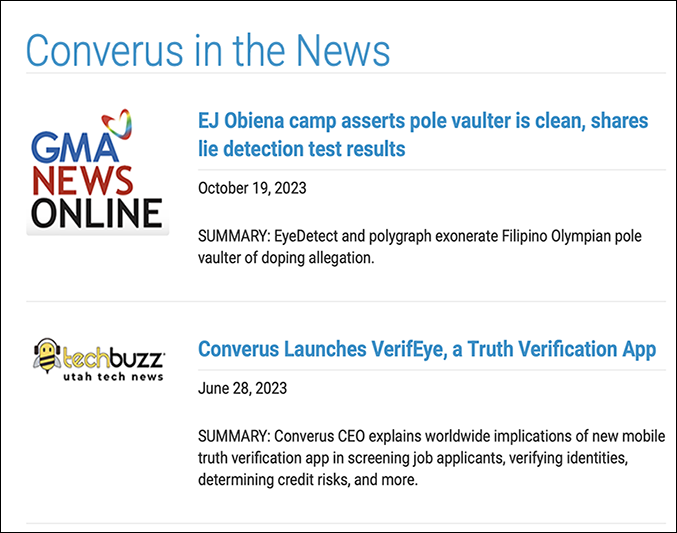
Are there business or marketing strategies that just annoy you?
Here’s one that’s irked me for a long time: the microscopic unsubscribe link. Hopefully blogging about it will be therapeutic!
The Nearly Cloaked, Tiny Unsubscribe Link
Unsubscribing from an email list should be simple, right? After all, the CAN-SPAM Act mandates that all marketing emails must provide an option to unsubscribe. Yet, some email marketers go out of their way to make it difficult — cue the tiny unsubscribe link.
Sometimes, the text is in a barely readable 3- or 4-point font, much smaller than the standard 10- to 12-point body text. For context, that’s up to 70% smaller than the rest of the email, practically demanding a magnifying glass.
And it gets worse: some marketers hide the link in a low-contrast color, blend it into a paragraph, or bury it at the very end of the email with other content — hoping readers miss it altogether. Why? Fewer opt-outs mean higher engagement stats. But what does it say about a brand when it has to resort to hiding an unsubscribe link?
An easily missed unsubscribe option reflects poorly on a company’s transparency, trustworthiness, and values. If a company feels the need to make opting out difficult, maybe it’s time to rethink the quality of the content they’re sending.
Here, I’ll make it easy — if this newsletter no longer resonates, here’s my unsubscribe link. The same size as this message’s body copy. Don’t like AuthenticityPR’s weekly email? There’s a way out. Though I admit, seeing anyone leave always stings a little!
An Unspoken Agreement – Broken
I once was connected with a marketing funnel expert, highly recommended by a trusted associate. After our initial meeting, he added me to his regular email list. Fair enough — I was now in his marketing funnel. I reciprocated by adding him to my newsletter distribution.
Within two or three issues, he unsubscribed from AuthenticityPR’s newsletter. My guess? I didn’t sign on as a client fast enough, and he decided I was a dead end. It was clear he was in it for the quick win and very “me-centered.” In my opinion, that’s not a sustainable way to do business.
Building genuine relationships takes patience. While I had been open to his services down the road, his hasty unsubscribe spoke volumes.
So, I returned the favor and unsubscribed from his emails.
The Danger of Unsubscribing: More Spam, Not Less
When it comes to actual spam, the unsubscribe button can be risky. Legitimate companies respect unsubscribe requests, but with spam emails, clicking “unsubscribe” often backfires. Here’s why…
Unsubscribing from a spam email signals that your email address is active, potentially increasing the volume of spam you receive. According to the Federal Trade Commission (FTC), any interaction with spam — including attempting to unsubscribe — can flag your email as valid, inviting more spam to your inbox.
Yikes.
Symantec (part of Broadcom), a major player in cybersecurity, echoes this warning. They’ve noted that spammers often track unsubscribe clicks to confirm active email addresses. Once they know your email is monitored, you can become a bigger target.
If an email seems suspicious, it’s safer to report it as spam in your email client (like Gmail or Outlook) rather than interacting with it. Reporting spam can reduce the likelihood of future junk messages without confirming your address to potential spammers.
Unsubscribe Tactics from Spammers
Many spam emails don’t even include a legitimate unsubscribe link. Instead, they might instruct you to reply with “stop” or “remove” in the subject line. Here are a few real examples:
- “Reply ‘stop’ and we’ll unsubscribe you.”
- “PS — If you’re not interested, let me know and I won’t follow up.”
- “To remove from this mailing, reply with the subject line ‘LEAVE US.’”
- “Not interested? Reply ‘unsub.’”
- “Please reply ‘remove’ if you do not need our service.”
In these cases, clicking “unsubscribe” or responding to their email isn’t just ineffective — it can actively harm you. Instead, report these as spam and send them to your spam purgatory folder. Most email providers let you block these addresses, which can help reduce the number of these emails in the future.
When Unwanted Emails Waste Time
Spam and unwanted emails don’t just clutter our inboxes; they can drain time and mental energy. Every minute spent managing spam is time that could be better spent on productive tasks. Email marketers who overuse the “tiny unsubscribe” and spam tactics only add to this frustration.
Fortunately, there are a few tools available to help manage unwanted emails:
- Spam Filters in Your Email Client – Most email providers, including Gmail, Outlook and Yahoo, offer automatic spam filters that move suspicious emails out of your inbox. You can adjust these settings to make the filters stricter if needed.
- Email Rules and Filters – Many email clients allow you to create custom rules to send emails from certain senders or containing specific keywords directly to a junk folder. This can save time by keeping your inbox clean.
- Unsubscribe Management Tools – Services like Unroll.me, Clean Email, and Mailstrom can help manage subscriptions by showing you all your subscriptions in one place, making it easy to unsubscribe with just a click. These tools work by analyzing your email patterns and may also allow you to “roll up” selected emails into a single, consolidated message.
- Block Specific Senders – In most email clients, you can block specific addresses, which prevents emails from those addresses from appearing in your inbox. It’s an effective way to keep repeat offenders from cluttering your inbox.
The 3 Big Takeaways
- Beware of spam “unsubscribe” links — clicking these can validate your email to scammers, resulting in more junk email.
- Legitimate companies should make unsubscribing easy — a clear opt-out option reflects positively on their integrity, transparency, and respect for consumer choice.
- Use tools to help manage unwanted emails — take advantage of filters, unsubscribe services, and blocking options to keep your inbox spam-free.
How do you handle spam and unwanted email? I’d love to hear your strategies. Do tell!

Jeffery E. Pizzino, APR is a spin-free public relations pro who is passionate about telling the why of your story with clarity, impact and authenticity. He began his PR career in 1987 at Ketchum Public Relations in New York City but has spent the majority of his career as a solopreneur. He’s AuthenticityPR’s Chief Authentic Officer and also functions as the fractional CCO for technology startup Converus.
Jeff has an MBA in Management from Western International University and a Bachelor of Arts degree in Communications — with an emphasis in PR — from Brigham Young University. He’s a native of Milwaukee, Wisconsin, but also holds an Italian citizenship. Jeff and his storyteller wife Leticia have four children and four grandchildren. In his extremely limited nonwork hours, he studies italiano, practices guitar, gardens, disc golfs, reads, listens to New Wave music, serves in his church, watches BYU football, and plays Dominion and Seven Wonders. Email Jeff.

